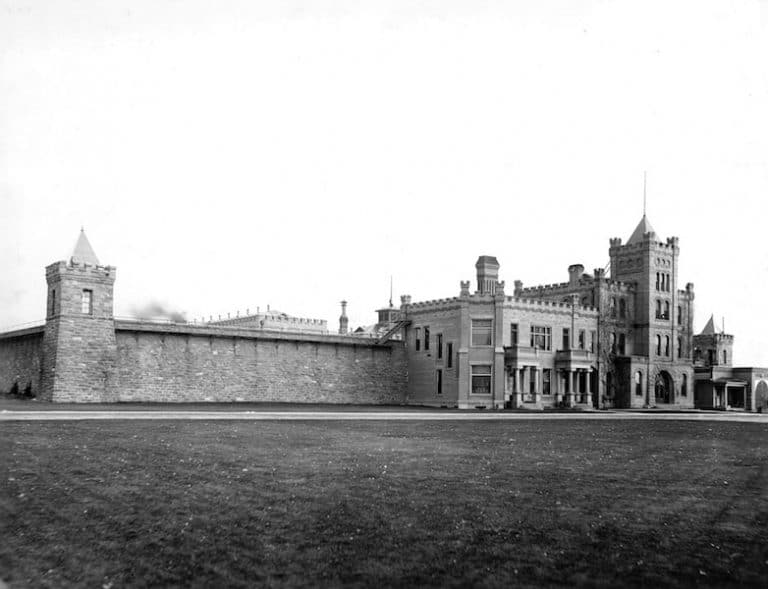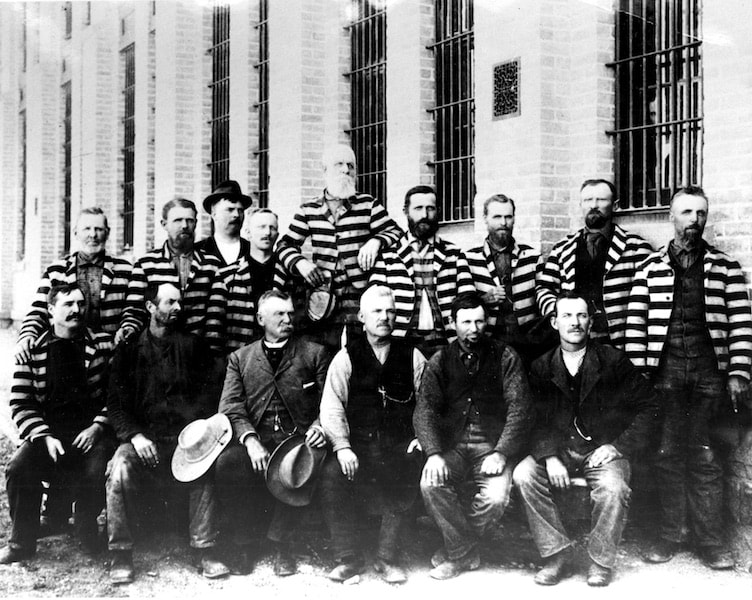
Nearly 70 years ago, Utah’s first state prison closed its doors and was transformed into the much-loved Sugar House Park. Construction is now underway on a new penitentiary that is 15 miles away but vastly different from its predecessors.
The Utah Territorial Prison opened in 1855 with 16 cells on 80 acres selected by Brigham Young. The original facility was built of brick and surrounded by a 12-foot wall, but that didn’t keep prisoners from making jailbreaks.
Between 1855 and 1878, 47 of the 240 convicts escaped. Breakouts were aided by there being no night guards for almost 10 years because of funding issues. Over the years, the prison was renovated to stone with a 19-foot wall, and expanded to nearly 250 steel cells to accommodate the growing number of convicts, including a population of polygamist prisoners.
Old photos of the facility show an almost castle-like exterior, and groups of prisoners posing for photos in black-and-white-striped uniforms.
But as more homes began to crop up in the Sugar House area, the state decided to move the prison to Point of the Mountain. In 1957, the Sugar House Park Authority took possession of the site and created the greenspace that exists today. All that remains of the former prison is a small stone wall marker in the park.

Today, the correctional facility in Draper is outdated, and the state is once again moving operations, this time to a 323-acre parcel west of the Salt Lake City International Airport.
Construction is underway on the $780 million, state-of-the-art facility, and the prison is on track to accept 3,600 inmates in 2022.
But it’s not just about having a more modern facility with better technology. It’s about improving inmate rehabilitation.
“In the current Draper facility, guards monitor inmates through computers, and there’s not as much direct contact with the correctional officers,” explains Marilee Richins, deputy executive director of the Utah Department of Administrative Services. “This new facility is being run under a new model called direct supervision. The correctional guards are not in caged-off rooms looking at computers, they’re actually out among the inmates.”
The new facility will accommodate improvements in medical services, counseling and education, with the goal of reducing the statistics of returning inmates, known as recidivism.

“You won’t see guard towers. There will be lots of natural light,” adds Richins. “You’ll see elements to help in the rehabilitation process, and I think that’s really exciting. These folks are going to be back in your neighborhoods. It’s really important that we work on providing normal activities and socialization.”
As for the 700-acre site of the current Draper prison? The parcel is slated for mixed-use redevelopment with the possibility of a large research and education facility anchoring the property—and there could even be a few parks.





